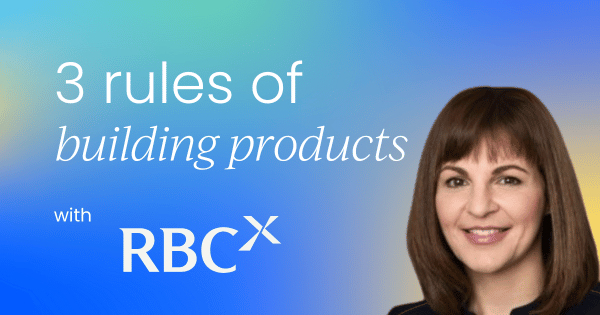Have you ever wondered what truly separates a good product from a great one? Or what helps a product leader build a career that is both impactful and fulfilling?
If so, you're in the right place.
In the world of product management, success isn't about a single stroke of genius; it's about mastering a set of fundamental principles that apply no matter the industry.
This article will share three golden rules for building products that customers love and a career you can be proud of.
This is a framework you can use to build a stronger product, a more cohesive team, and a more fulfilling career. Let's dive into the core strategies that will help you thrive in the dynamic world of product management.
Understanding the PM role
Before we dive into the rules, let's align on a common understanding of what a product manager is. In different companies, this role is defined in different ways, but for me, a product manager is the "master of all trades."
Our job is to identify the most impactful problems for the customer, leverage all available resources, and deliver measurable business value.
So, what does that look like in practice? It means you have to ask yourself three fundamental questions every single day:
- What is the deep customer problem you are trying to solve? If your conversation about a product doesn't start with the customer, you're probably not doing product management. You have to be customer-centric in everything you do, whether your customer is external or internal.
- How do you utilize your team's resources? Resources are always limited, and that's okay. Your job is to make the most of what you have, whether that’s your engineering and design teams or external consultants.
- What is the measurable business impact? This is crucial. If you can't articulate the value your work is delivering, you’re missing a key part of the job.
But even with these questions in mind, there's one thing that underpins it all: the "why."
As Simon Sinek famously said, "People don’t buy what you do, they buy why you do it." When you’re pitching a product idea, you're not just selling a feature list. You’re selling the reason it exists, the problem it solves, and the value it brings.
If you and your team don't have a shared understanding of the "why," you'll face conflict and a disjointed roadmap.

Golden rule #1: Obsess over the customer, not just their words
The first golden rule is to have a deep, unwavering focus on the customer. But here's the thing: you can't just ask them what they want.
If you do, they’ll tell you to make the product faster, less expensive, and to fix their bugs. While these are valid points, they don't reveal the whole story.
The real magic happens when you move beyond what customers say and start observing how they behave.
For example, a customer might be using your product "wrong." Don't blame them; get curious. Why are their behaviors different from what you expected? Have you failed to explain the value?
Remember, when you point a finger at a customer, there's a finger pointing back at you.
A powerful example of this is the iPod.
Did Steve Jobs do market research and ask people if they wanted "a thousand songs in their pocket"? No. He observed a macro-trend: people wanted to listen to music while exercising, and the current devices were bulky.
He also saw what was happening with Napster and the digital music industry. He combined these insights to create a product that solved a real behavioral need and a massive business problem simultaneously.
He focused on what people were doing, not just what they were asking for.
To get these insights, you need continuous feedback loops. Track your monthly active users, monitor your NPS scores, and pay attention to what people are saying in Google reviews.
These metrics give you a clear picture of how your product is being used and perceived. As I've learned in my advisory roles, you can't solve all problems for all customers.
You have to be strategic and listen with one ear, always keeping an eye on the macro trends, because your job is to build for the masses, not just one person.

Golden rule #2: Empower your team, don't just direct them
The second golden rule is to empower your people. As a product manager, you might only have a few direct reports, but you influence dozens of people across the organization – engineering, design, sales, and marketing.
If you don't build collaborative relationships, nothing will get done.
You have to build trust and accountability. Once you've aligned on the "why" with your team, your job is to set the bar high and then get out of the way.
As Steve Jobs put it, "It doesn't make sense to hire smart people and then tell them what to do. We hire smart people so they can tell us what to do." Your role is to coach them, break down barriers, and provide the resources they need.
If you are an individual contributor, your job is to build the product. But if you're a people leader, your job is to build the people who build the product.
This shift is critical for career growth and creating a truly great team. When everyone knows what’s expected of them and has the autonomy to do their best work, you’ll see incredible results.

Golden rule #3: Drive outcomes, not just output
The third rule is to drive outcomes. It's not enough to say, "We shipped a new feature." You must be able to explain the business value behind it.
Even a small bug fix can have a measurable outcome. For example, "If we fix this bug, we'll reduce customer support calls by 25%," or "This improvement will increase our Google review score by five percent."
This is where data-informed decision-making comes in. Notice I said "informed," not "driven." That's because customer and market behaviors can change.
Black swan events, like a global pandemic, can completely alter how people behave. Just because something happened yesterday doesn't mean it will happen again.
You have to use data to inform your decisions while recognizing that it's not the only truth.
Ultimately, this comes down to building a culture that's obsessed with outcomes. This focus naturally leads to better teams and a stronger organization.
It also aligns perfectly with what Daniel Pink says in his book, Drive. He argues that people are motivated by three things: autonomy, mastery, and purpose.
These are the core reasons why people become product managers.
When I'm hiring, I’m not just looking at a resume; I’m looking for someone with the right attitude, someone who is genuinely driven by a calling to build great things.

A career of shared wins
I'll leave you with a final thought, a bonus rule.
Product leadership is not a zero-sum game. It's about giving to get back, and recognizing that we all win together. It's about being willing to spend that extra hour on the whiteboard with the engineering team or going the extra mile for a customer.
Your career is a journey, and there will be great days and not-so-great days. When you have a bad customer meeting where they tell you how you’ve failed, see it as a learning experience.
As Angela Duckworth writes in her book, Grit, it’s not just about talent or effort; it's about what you do with that effort. The best product managers are the ones who get up, learn from their setbacks, and continue to excel.
So, to wrap it all up: seek alignment on your role, understand your responsibilities, and focus on growth. Follow the three golden rules – focus on the customer, empower your people, and drive outcomes.
And most importantly, remember that every win is a shared win.



 Follow us on LinkedIn
Follow us on LinkedIn







